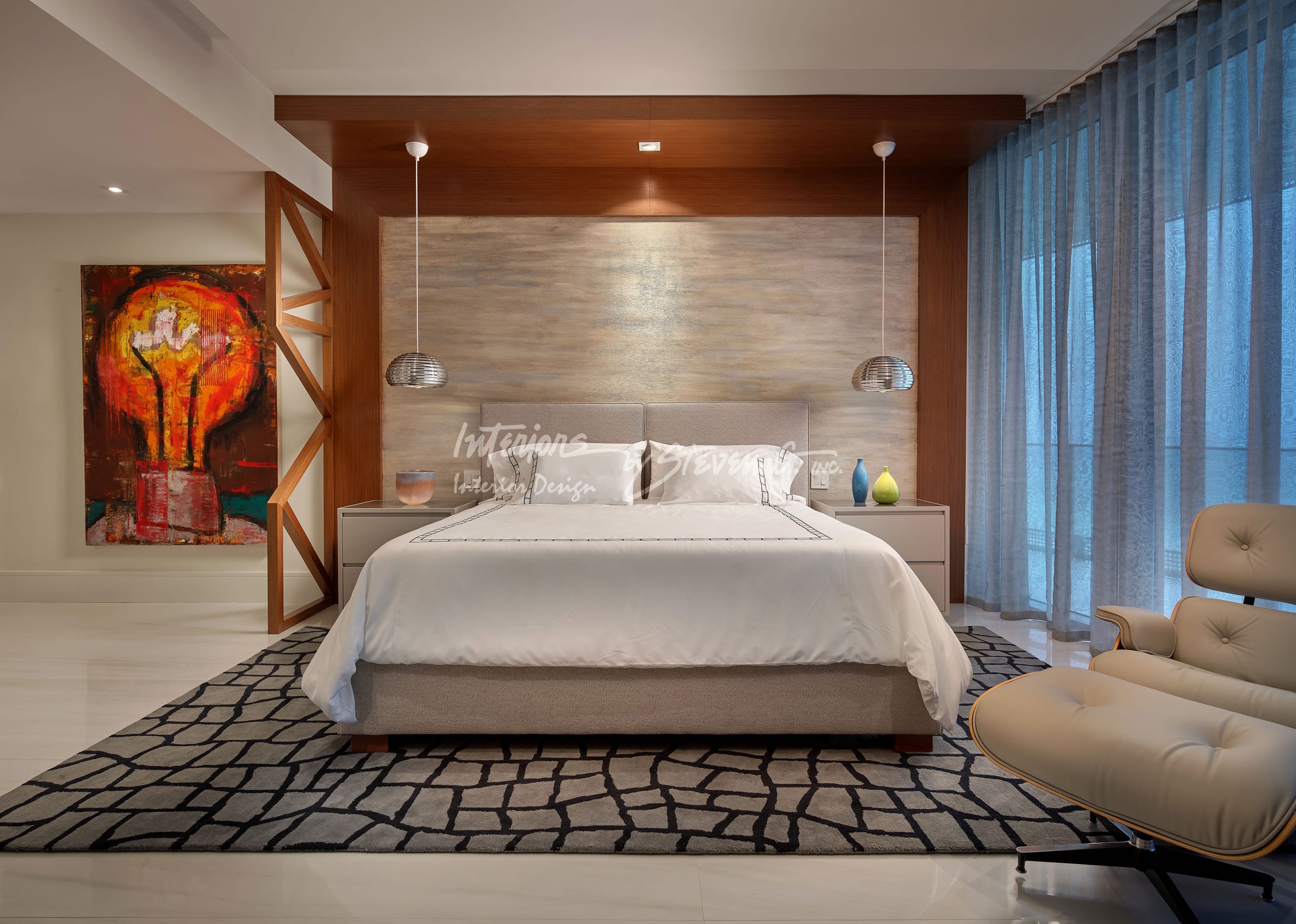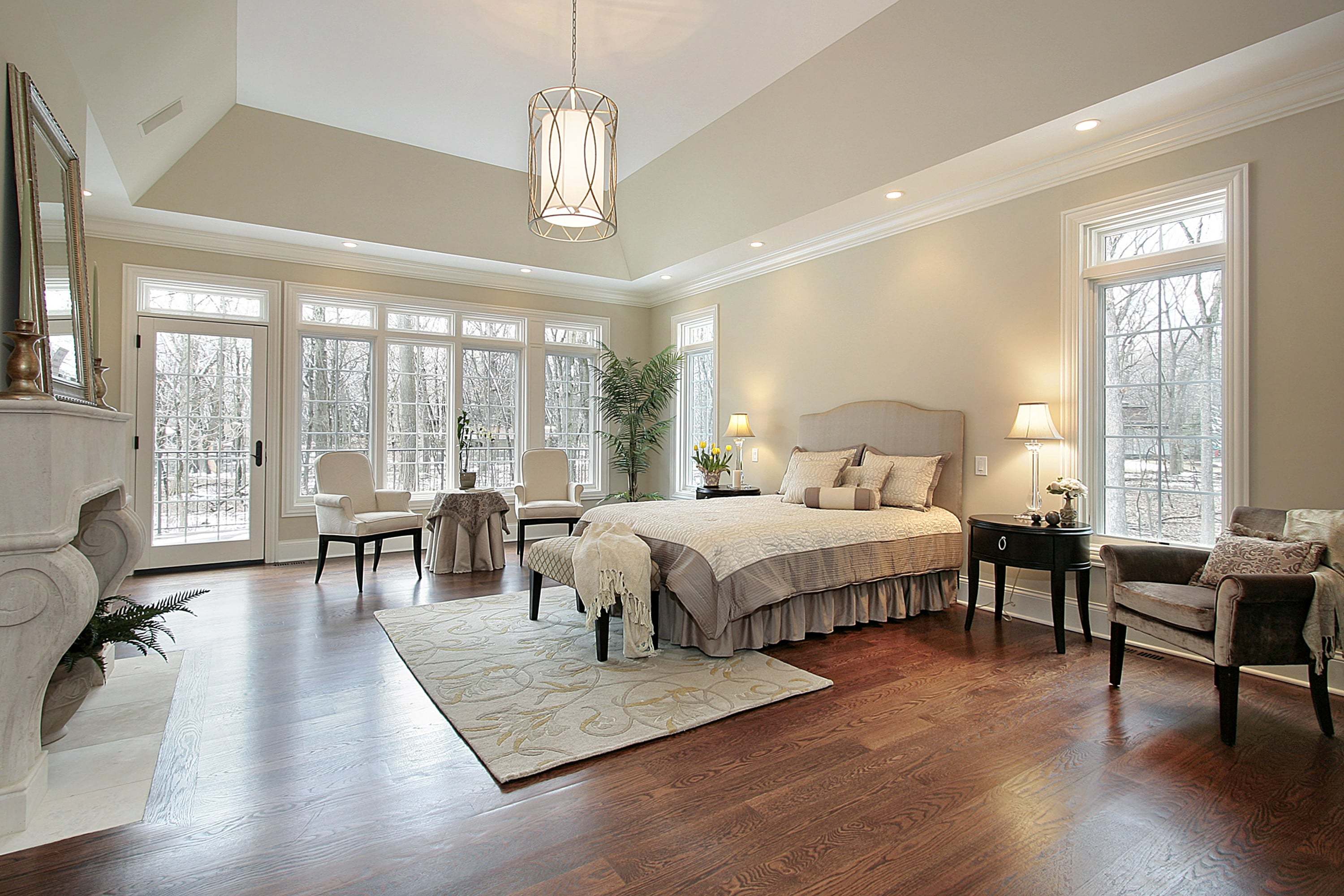Master Bedroom Placement and Design Considerations

Placing the master bedroom at the front of the house is a common design choice that offers both advantages and disadvantages. It’s a strategic move that shapes the overall flow and ambiance of the home, influencing everything from privacy to natural light.
Privacy and Security, Master bedroom front of house
Placing the master bedroom at the front of the house presents unique challenges regarding privacy and security. While it may offer a sense of prominence and openness, it also increases the potential for unwanted attention.
- Windows and Views: Carefully consider the placement and size of windows to maintain privacy. Strategically placed window treatments, such as blinds, curtains, or frosted glass, can offer control over light and visibility.
- Landscaping: Utilizing dense plantings or strategically placed trees can provide a natural barrier between the bedroom and the street, obscuring the view from the outside and creating a sense of seclusion.
- Lighting: Consider using low-level lighting in the evening to minimize visibility from the outside. This can help maintain privacy and discourage unwanted attention.
- Security Features: Installing security systems, motion detectors, and reinforced doors can provide an added layer of protection and peace of mind.
Views and Natural Light
A master bedroom at the front of the house can offer captivating views and abundant natural light. However, it’s crucial to consider the potential downsides and manage these elements effectively.
- Street Noise: A front-facing bedroom may be exposed to street noise, which can disrupt sleep and create a less relaxing atmosphere. Soundproofing techniques, such as double-paned windows or thick curtains, can help mitigate noise intrusion.
- Sunlight: While natural light is beneficial, excessive sunlight can be overwhelming and lead to overheating. Consider using window coverings to regulate light levels and prevent excessive heat gain.
- Privacy: If the street offers limited privacy, strategically placed window treatments can help control visibility and maintain a sense of seclusion.
Architectural Styles
Master bedrooms at the front of the house are a common feature in various architectural styles.
- Traditional Homes: Traditional homes often feature a grand entrance with the master bedroom prominently located at the front, emphasizing the importance of the primary living space.
- Colonial Homes: Colonial architecture often features a symmetrical facade with the master bedroom located on the second floor, offering a sense of grandeur and privacy.
- Victorian Homes: Victorian homes frequently feature a variety of architectural elements, including bay windows and porches, which can create beautiful views and enhance the sense of space in the master bedroom.
- Modern Homes: Modern architecture often emphasizes open floor plans and large windows, allowing the master bedroom to seamlessly integrate with the front of the house, creating a sense of connection with the exterior.
Master Bedroom Layout and Functionality: Master Bedroom Front Of House

The layout of your master bedroom significantly impacts its functionality and overall feel. A well-designed layout maximizes space, enhances flow, and creates a relaxing sanctuary. This section explores various layout considerations, including furniture placement, storage solutions, and walk-in closets, specifically tailored for master bedrooms at the front of the house.
Master Bedroom Layout Considerations
Master bedrooms at the front of the house often benefit from larger windows, offering ample natural light. This advantage presents an opportunity to create different layouts that emphasize the view and optimize functionality. Here are some key considerations:
Furniture Placement
- Bed Placement: The bed is the focal point, so position it to maximize the view and natural light. Consider placing the bed against the longest wall to create a sense of spaciousness, or strategically position it perpendicular to the windows to create a cozy alcove.
- Nightstands: Nightstands should be placed within easy reach of the bed, ideally with enough space for a lamp, a book, and other essentials.
- Dresser: A dresser can be placed across from the bed, providing a symmetrical balance. Alternatively, it can be incorporated into a built-in unit that combines storage and display elements.
- Seating: Include comfortable seating options, such as a chaise lounge or armchair, to create a relaxing reading nook or conversation area.
Storage Solutions
- Walk-in Closet: A walk-in closet provides ample storage space and enhances organization. Consider a custom closet system with drawers, shelves, and hanging rods tailored to your specific needs.
- Built-in Storage: Utilize built-in shelving, drawers, or cabinets to maximize wall space and provide efficient storage solutions.
- Under-Bed Storage: Invest in storage solutions that fit under the bed to maximize floor space and store seasonal items or less frequently used belongings.
Walk-in Closets
- Layout: Plan the layout to optimize functionality. Consider a U-shaped layout for ample space and a linear layout for smaller areas.
- Lighting: Adequate lighting is crucial for visibility and creating a welcoming ambiance. Incorporate overhead lighting and strategically placed accent lights.
- Ventilation: Proper ventilation is essential to prevent mustiness and mildew. Include a window or a ventilation system.
Front-Facing Master Bedroom Layouts
Front-facing master bedrooms offer unique opportunities for design and layout. Here’s a comparison of popular layouts:
Open-Concept Layout
- Strengths: An open-concept layout creates a spacious and airy feel, especially when paired with large windows. It also allows for flexibility in furniture placement and facilitates easy flow.
- Weaknesses: Open-concept layouts can be challenging to define separate areas for sleep, relaxation, and work. They may also require more intentional furniture arrangement to create a sense of privacy.
Enclosed Layout
- Strengths: An enclosed layout provides a more intimate and private space, ideal for those who prefer a sense of seclusion. It also allows for more defined areas for sleep, relaxation, and work.
- Weaknesses: An enclosed layout can feel smaller and less airy, especially if the room is naturally dark. It may also limit flexibility in furniture placement.
Combined Layout
- Strengths: A combined layout combines elements of both open-concept and enclosed layouts, creating a balance of space and privacy. It can incorporate features like a partial wall or a strategically placed screen to define areas while maintaining a sense of openness.
- Weaknesses: A combined layout requires careful planning and execution to ensure a cohesive and functional space. It may also require more creative solutions to manage clutter and define areas.
Incorporating Additional Features
Master bedrooms at the front of the house can be enhanced with features like a fireplace, reading nook, or home office. Here are some creative solutions:
Fireplace
- Placement: A fireplace can be placed at the foot of the bed, creating a cozy and inviting ambiance. Alternatively, it can be positioned on a side wall, serving as a focal point and dividing the room into separate areas.
- Design: Consider a traditional fireplace with a mantel for displaying artwork or a modern gas fireplace for a clean and sleek aesthetic.
Reading Nook
- Location: A reading nook can be created by strategically placing a comfortable chair or chaise lounge near a window with a view. Consider adding a small side table for a lamp and a book.
- Privacy: Enhance the privacy of the reading nook by incorporating a floor lamp with a shade, a bookcase, or a freestanding screen.
Home Office
- Design: Create a dedicated workspace within the master bedroom by utilizing a built-in desk, a freestanding desk, or even a repurposed dresser.
- Storage: Incorporate storage solutions, such as a bookshelf or file cabinet, to keep the workspace organized and clutter-free.
Master Bedroom Style and Decor

The master bedroom, especially one located at the front of the house, is a sanctuary where you can unwind and recharge. Its style and decor play a crucial role in setting the mood and creating a space that reflects your personality and preferences.
Mood Board: Master Bedroom Styles
A mood board is a visual representation of different design styles, showcasing elements like color palettes, textures, and furniture. Here are some styles suitable for a front-facing master bedroom:
- Modern Minimalist: This style prioritizes clean lines, neutral colors like white, gray, and black, and a minimal use of decorative elements. The focus is on functionality and creating a sense of calm and order. A mood board for this style would feature sleek furniture with geometric shapes, a muted color palette, and natural materials like wood and stone.
- Contemporary: Similar to minimalist, but with a more playful approach to color and texture. It often incorporates bold geometric patterns, metallic accents, and unique lighting fixtures. A mood board might include vibrant accent colors, luxurious fabrics, and statement artwork.
- Bohemian: Characterized by eclectic mixes of patterns, textures, and colors, often inspired by global cultures. A mood board for this style would feature layered rugs, vibrant textiles, ethnic artwork, and natural materials like wood and leather.
- Traditional: This style emphasizes classic elements like ornate furniture, rich fabrics, and intricate details. A mood board might include antique-inspired pieces, floral patterns, warm color palettes, and decorative moldings.
- Transitional: Blends elements of traditional and contemporary styles, creating a balanced and timeless aesthetic. A mood board could feature neutral color palettes, clean lines, luxurious fabrics, and a mix of traditional and modern furniture pieces.
Color Palettes, Textures, and Materials
The color palette, textures, and materials used in a master bedroom can significantly impact its overall atmosphere.
- Color Palettes: Neutral colors like white, gray, beige, and cream create a sense of calm and serenity. Warmer tones like browns, yellows, and oranges can make the space feel more inviting and cozy. Cool colors like blues and greens can promote relaxation and tranquility. Using a combination of these colors can create a balanced and sophisticated look.
- Textures: Textures add depth and interest to a space. Soft textures like velvet, silk, and wool create a luxurious feel. Rougher textures like linen, burlap, and wood add warmth and a sense of grounding. Combining different textures can create a multi-layered and inviting atmosphere.
- Materials: Natural materials like wood, stone, and leather bring a sense of warmth and authenticity. Metal accents can add a touch of sophistication and modernity. Using a combination of different materials can create a visually interesting and textural space.
Incorporating Personal Touches
Personal touches are essential in creating a space that feels truly your own.
- Artwork: Artwork can reflect your interests, hobbies, and personality. Choose pieces that inspire you and that you enjoy looking at.
- Plants: Plants add life and freshness to a space. Choose plants that thrive in the light conditions of your bedroom and that complement the overall style.
- Lighting: Lighting can significantly impact the mood of a space. Use a combination of ambient, task, and accent lighting to create a layered and inviting atmosphere.
- Throw Pillows and Blankets: Throw pillows and blankets add comfort and style. Choose fabrics and patterns that complement the overall design scheme and reflect your personal taste.
- Rugs: Rugs can define areas within a space and add warmth and texture. Choose a rug that complements the color palette and style of the bedroom.
Master bedroom front of house – Having the master bedroom at the front of the house can be great for privacy, but it also means the bathroom is likely in a high-traffic area. To keep things tidy, consider using a shallow bathroom storage cabinet to maximize space and style.
This way, you can keep your bathroom organized and looking its best, even with guests coming and going from the front door.
Having the master bedroom at the front of the house can feel like you’re living in a hotel suite, with all the privacy and grandeur that implies. But even the most luxurious suite needs functional storage, and that’s where the unexpected inspiration of plastic caravan bathroom cabinets comes in.
They’re lightweight, waterproof, and surprisingly stylish, making them perfect for creating a spa-like atmosphere in your master bedroom’s ensuite bathroom.
